I’ve always wanted to see the Basque Country. I’ve heard wonderful things about the area’s landscapes, and people I trust have always talked warmly about Bilbao and the places around it. So, when the opportunity arose, I knew I had to book my flights and prepare for another adventure. Subsequently, I knew it was time for another Polaroid diary; hence, the regular question appeared: which instant camera should I pack in my bag?
The usual procedure followed: check the weather. If you’ve been following my Polaroid diaries on this blog, you know this is always a must-do step when choosing the camera. It’s not only about cloudy or sunny skies; it’s also about the temperature. As you probably know, the temperature affects the looks of instant photos: cold weather translates to a blue tint, while heat gives them a yellow tint.
I planned the trip to the Basque Country for mid-autumn. Unsurprisingly, the weather forecast was a mixture of sun and clouds with relatively cool temperatures. Although this might sound ideal, it can very well be tricky. The rational decision would be to bring a camera with a flash, like the Impulse AF or the 660. However, I realized I hadn’t shot Polaroids in a while with my SX-70.
I kept thinking about the best instant camera I should pack. In the end, I took the less rational decision: I packed my SX-70.
*Some links are affiliate links. It means that if you buy something, I might earn a small commission at no additional cost to you.
What’s on the Polaroid Diaries: The Basque Country with the SX-70
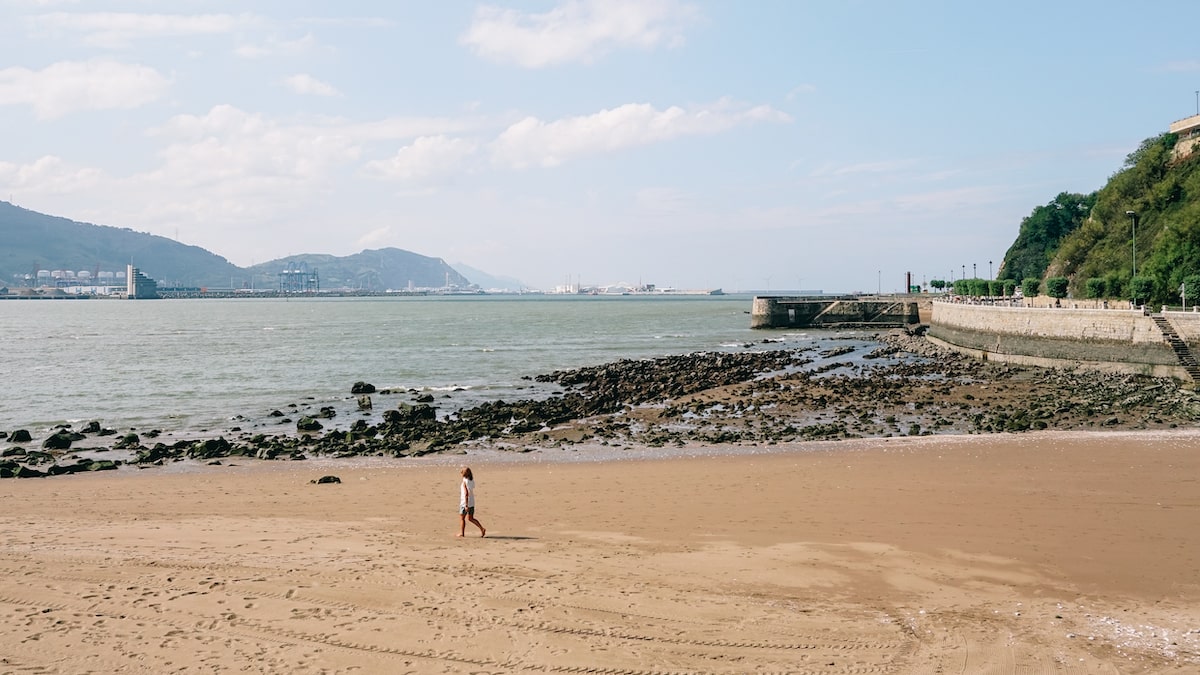
The Polaroids I shot at the Basque Country created the 29th edition of these diaries. I covered quite some distance in instant photography, but if you think that experience and development walk hand in hand, you are probably wrong.
There are always surprises in instant photography. The moment you think you know everything, an instant camera will prove you wrong. While that’s sometimes nerve-racking, it’s definitely part of the medium’s charm. Therefore, in this edition, you will see the 8 photos I shot in the Basque Country with the Polaroid SX-70.
As always, you will get information about the camera’s settings at the bottom of this post. However, before starting with the images, I want to mention that they have a constant blue tint. Despite my yearlong experience with instant photography, I still can’t understand why. The weather was not that cold (like in Bergen or Gothenburg, for example) to justify that. If that’s an issue with the camera or the film, well, I’ll have to wait until the next SX-70 edition.
At least, the Polaroids were sharp as always due to the magnificent, vintage SX-70 lens.
Basque Country Polaroids with the SX-70
I based myself in Bilbao, and the flat I rented was conveniently located next to the iconic Guggenheim Museum. Apart from easy access to the museum, it was also great for my daily commute. Every day, I’d walk past the famous Puppy, the famous sculpture by Jeff Koons. The Puppy is a twelve-meter statue of a dog covered in flowers, and it’s impressive to see it up close. It’s a colorful sculpture symbolizing love and affection, and that’s how my SX-70 captured it.

Later the same day, I rented a bike and rode it to Getxo. This coastal Bilbao suburb impressed me with its charm and beautiful villas. Moreover, it was in Getxo that I stood in front of the Atlantic Ocean after five years. I fell in love with the place and revisited it during my stay. It was the only place I had ever seen twice in Basque Country. The sun was intense that day in Getxo, and I thought of shooting a landscape photo of the beach. A woman was walking at the beach, and I waited for her to enter the frame.
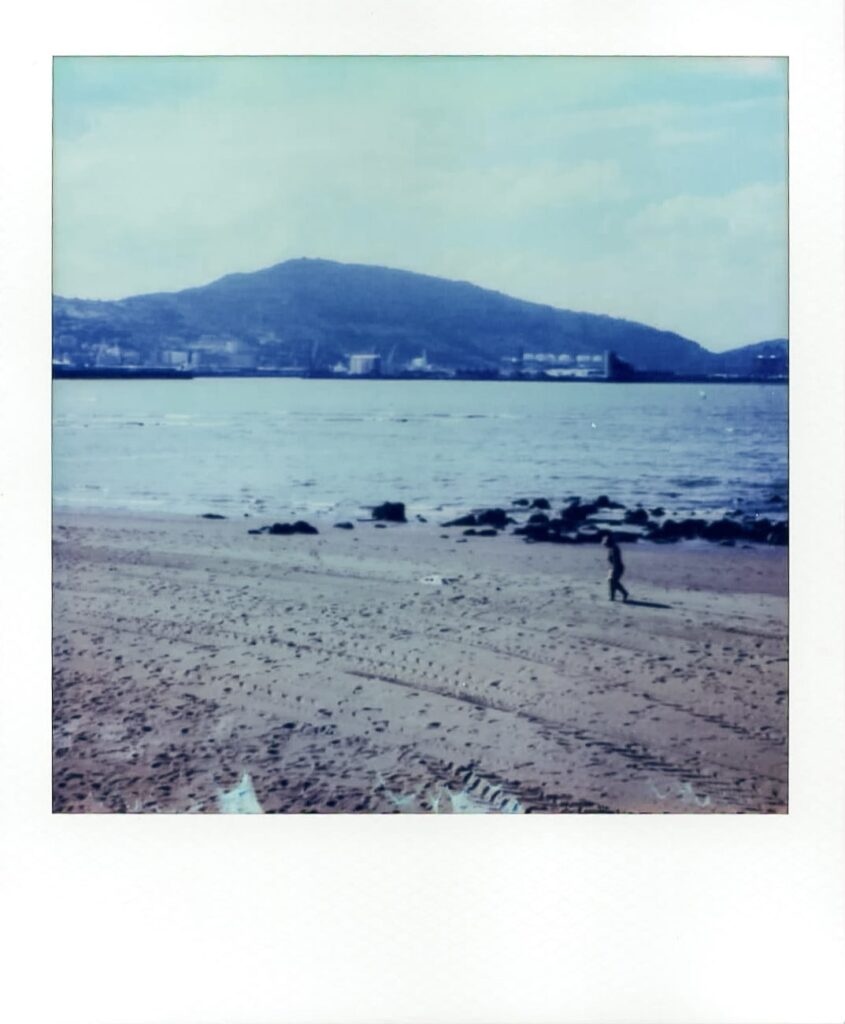
One of the following days, I visited the world-famous San Juan de Gaztelugatxe. A Game of Thrones filming location, Gaztelugatxe attracts thousands of visitors due to its dramatic landscape. A rock in the Atlantic Ocean, featuring a church on its top, accessible on foot via a man-made bridge. My digital photos looked fantastic, but I can’t say the same about the polaroid. Although I was there shortly past 10 am, the image is unfortunately a bit dark. At least the shadows contribute to the atmosphere.

The next stop was Mundaka, a small coastal town that might appear sleepy at first glance. You can see Mundaka in one or two hours, but what brings people here is that it is interconnected with surfing. Mundaka has one of the best-left waves in the world, and surfers come here to ride it. There’s also an old church at Mundaka’s entrance, which I tried to portray. The film somehow misbehaved. Although the contrast between the church and the man walking his dog looks nice, the right side of the film shows a weird blow of highlights.

And then it was Gernika (also known as Guernica). Immortalized by Picasso’s painting, Gernika is a small, charming town. At Gernika, you will also see an open-air replica of Picasso’s painting, and I definitely wanted to shoot a Polaroid. The problem was that the replica was in the shadow when I arrived at the spot. This meant I had to sacrifice the highlights in order to get at least some details of the painting. Here’s what I got.
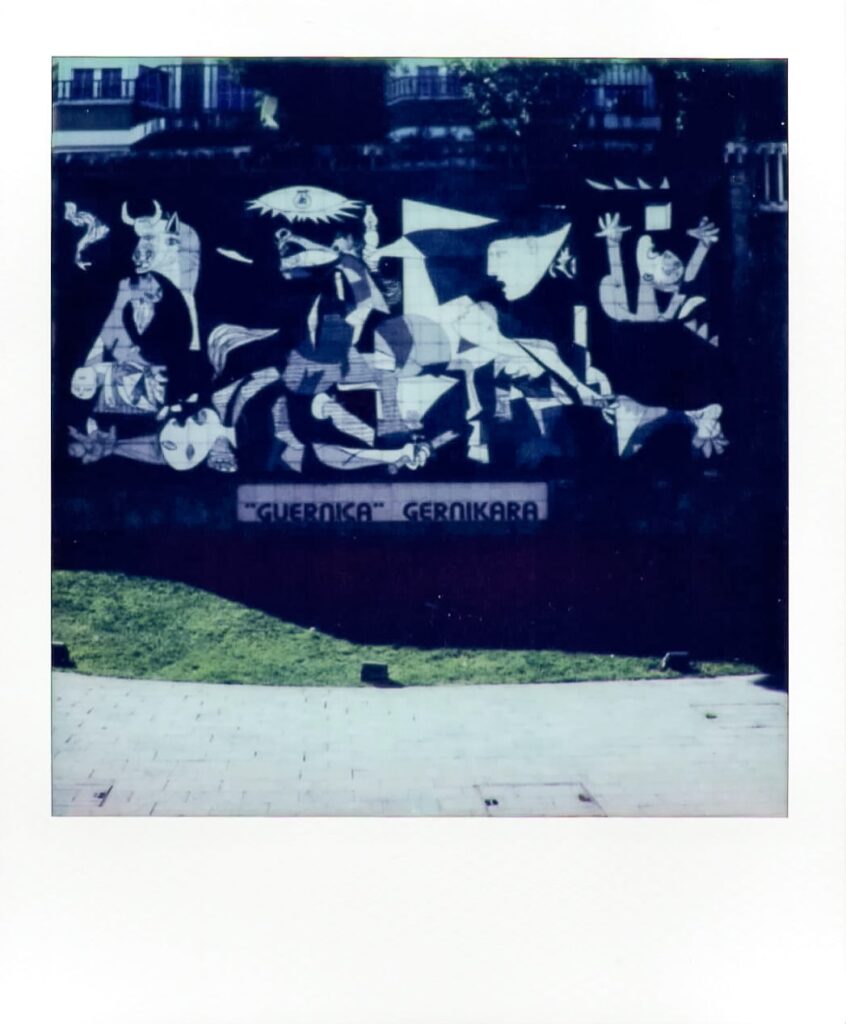
Somewhat unsatisfied with the result, I visited the Park of the Peoples of Europe afterward, which featured large-scale statues by famous artists. Henry Moore’s statues are always pleasing to the eye, but I decided to shoot a Polaroid of the “Gure Aitaren Etxea” by Eduardo Chilida. That’s an 8-meter tall statue, symbolizing the home of the Basque people. I stood a few meters away from it, and that’s what the SX-70 offered me.
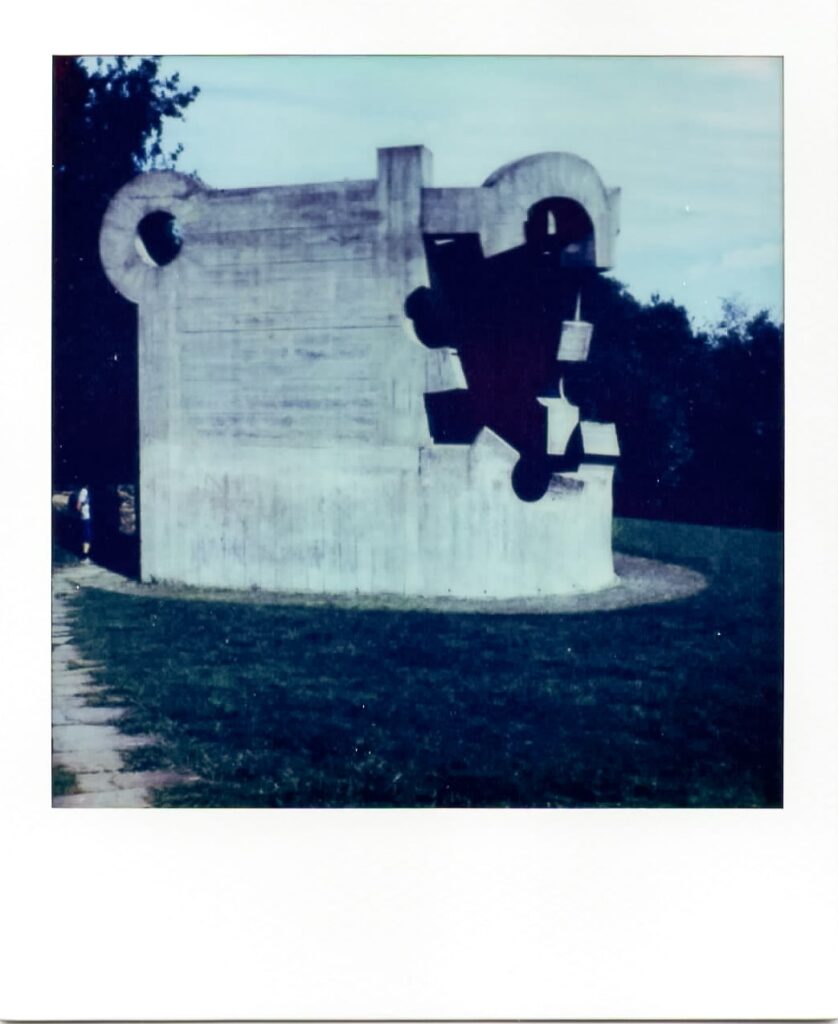
I had two Polaroid images left on my SX-70. I decided to save them for my last trip to the Basque Country. And it was probably the most impressive place I saw on this journey. San Sebastian made me feel like I walked in a poem. I know it might sound like an exaggeration, but I can’t really describe it in any other way. Throughout my journeys in Europe, I don’t think I’ve ever seen a more beautiful coastal city. La Concha Beach mesmerized me, and I shot tons of photos there. Obviously, I knew I had to shoot an instant photo, too.
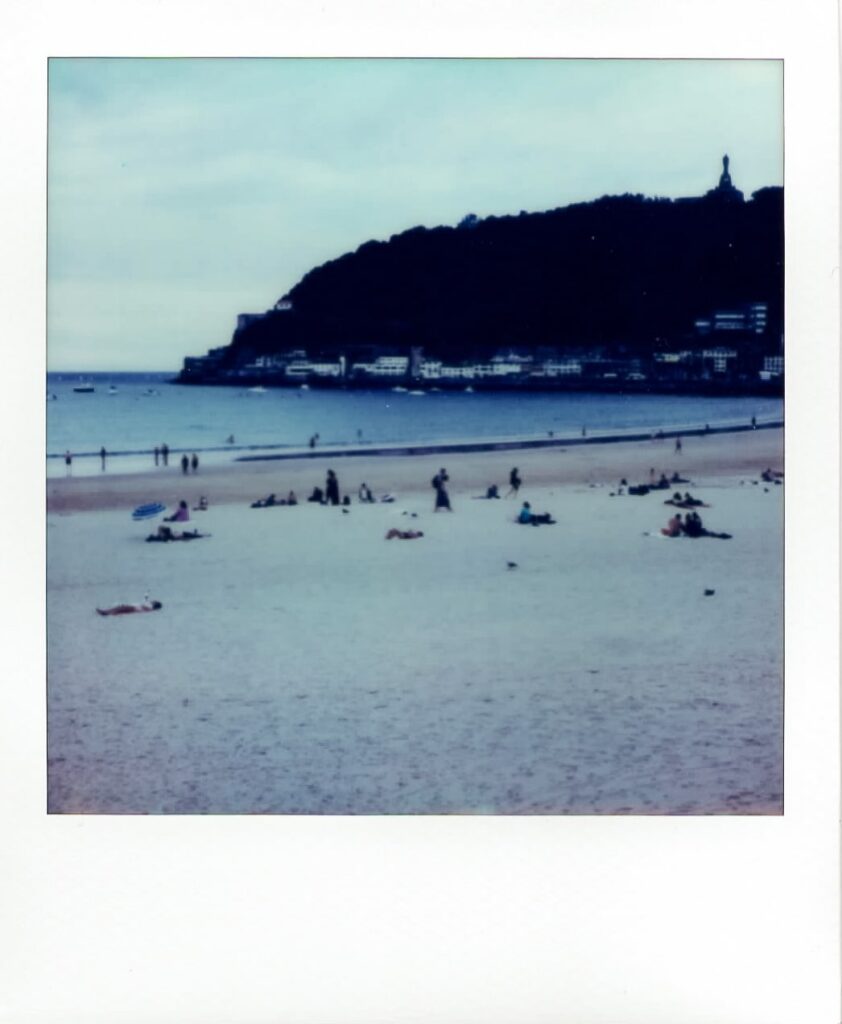
The last image of this Polaroid Diary is probably my favorite one. It is once again shot at San Sebastian, on the city’s waterfront promenade. Despite the omnipresent blue tint, the rocks have a wonderful texture, and I find the sea blue simply beautiful.

And that’s it with the 29th edition of my Polaroid Diaries and the images I took at the Basque Country with the SX-70.
The camera settings for the Basque Country Polaroids
In most Polaroid Diaries, I don’t mess up too much with the settings. I usually know which setting I should use after the first photo, judging by the weather and the available light in each location. However, in Basque Country, I must confess that I struggled quite a lot with my beloved SX-70.
The blue tint was one thing. It’s present in every image, even though I hid the photo in my pocket straight after shooting it. I always follow best practices in instant photography to secure the best result I can get. Of course, things don’t always work as planned, but the reality was different this time.
Apart from the blue tint, I also played a lot with the exposure. Somehow, the light never felt enough. Even at the Gernika painting I overexposed by 1 2/3 stops, the highlights aren’t as blown away as I’d expect them. In general, I overexposed all images between 2/3 of a stop and one full stop. The Gaztelugatxe Polaroid was a must for me to have, and I went up a full stop, although it was pretty early in the morning. But even this seems pretty dark.
I am always glad when I have one presentable Polaroid after a journey. Therefore, I’m happy that the last one, from the rocks of San Sebastian, worked nicely. While the rest are not bad, they could definitely be much nicer, given the weather conditions. Time will tell if it was a faulty film or if there’s an issue with my SX-70. I believe I will have a better idea when I shoot the next film—whenever that is.
As a final remark, I don’t regret packing my SX-70 for this journey. It’s always nice to have it with me, and honestly, it’s a joy to shoot intuitive photos with it.
And that’s it with my Basque Country Polaroids with the SX-70. If you want to see more diaries, get instant photography tips, and read honest camera reviews, subscribe to my Polaroid mailing list.
And don’t forget to check out my Polaroid Zines.
You can search for second-hand SX-70 cameras on Amazon.
More Polaroids: The complete Polaroid diaries
Polaroid Camera reviews: Polaroid Sun 660 review, Polaroid Impulse AF, Polaroid NOW+ review
Pin it for later
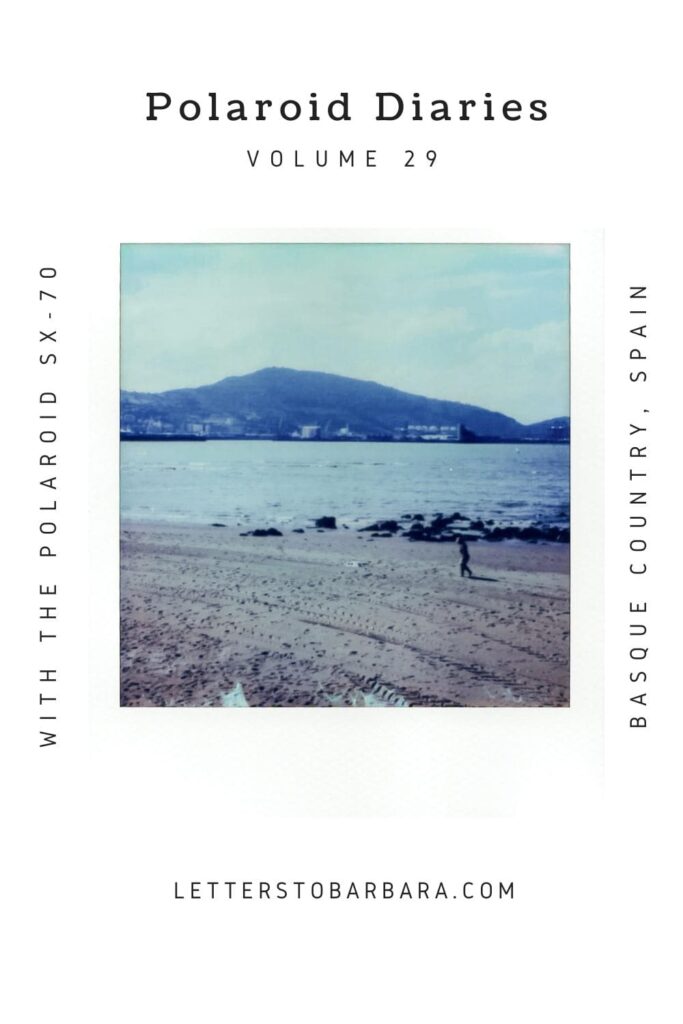
Sharing is caring. Share these Polaroids from Ljubljana, Slovenia, with your friends.
Last Updated on March 29, 2025 by George Pavlopoulos

